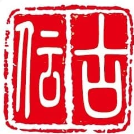“Arinari” (有成), son or student of Sanjō Munechika (三条宗近), a tradition says that he was a student of the Ōshū smith Arimasa (有正), his early smith name was supposedly Arimori (有盛), it is said that he signed with the name Tametoshi (為利) during his stay in Kyōto and that he made there the sword Ishikiri (石切, lit. “stone cutter”) for Akugenta Yoshihira (悪源太義平, 1141-1160), but this would mean that his active period has to be moved up for about 150 years, other sources date him to the Heiji era (平治, 1159-1160) which seems more correct. It's a big name, kinda legendary, so most likely the kinzogan mei is fake. But the Shippo koshirae is nice


